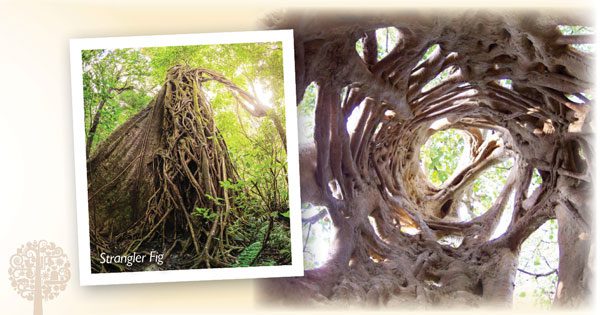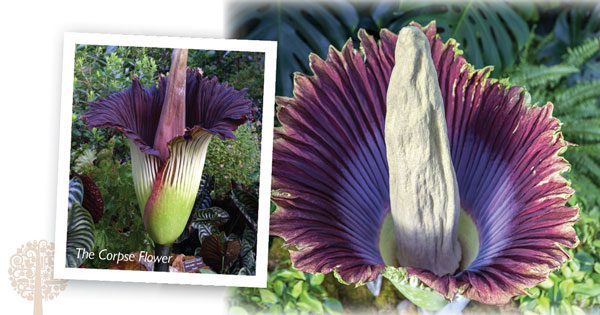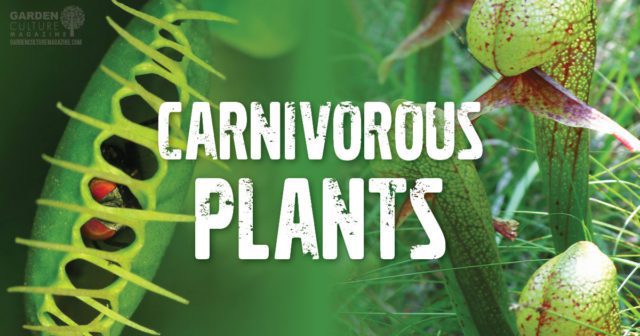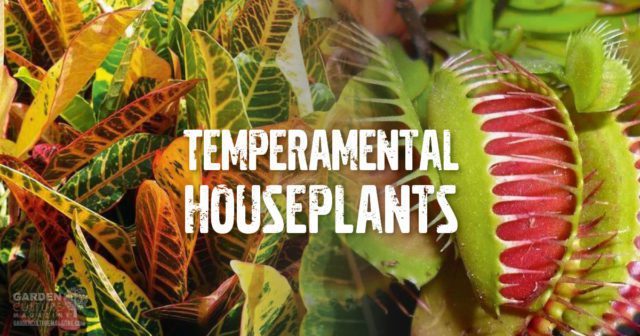The plant world is fascinating! Did you know that the White Baneberry plant produces pretty little white fruits that are very toxic and that the Bleeding Tooth Fungus plant is entirely edible? There are more than 300,000 plant species on the planet, from the most basic of flowers to some of the most bizarre and evolutionarily-amazing plants you have ever seen (or probably never seen). Here’s our list of the strangest ones out there.
Welwitschia Mirabilis

The Welwitschia Mirabilis plant is found in the deserts of Namibia. Discovered by Friedrich Welwitsch in 1859, the Welwitschia has an estimated lifespan of between 500 and 1500 years! There are most likely Welwitschia plants he saw that are still alive today. These plants produce only two leaves that continue to grow for the entire lifespan of the plant (often getting split into segments by the harsh desert winds).
Strangler Fig

We all know the idea of “give and take,” but the strangler fig only knows how to take! There are several different strangler fig species, but they all work the same way. Strangler figs are found in rainforests and hitch a ride on birds who then drop them down into the tropical canopy where they attach themselves to a tree and start “taking.” The plant will push its roots down and around the tree and into the surrounding soil as it feeds itself by stealing nutrients from its host, eventually killing the tree.
Living Stones

Living stones are unique succulents that, at a glance, one could easily think were stones. The plant’s long root is completely underground – leaving just two fused and thick leaves above ground. The plant grows slowly, eventually pushing small flowers out from between the leaves. Unlike the other plants on this list, living stones are something you can grow at home. Be careful not to overwater them, but otherwise, they’re easy to care for. You can even purchase living stones seeds on Amazon!
Hammer Orchid

Plants require pollination to reproduce. While various plants have developed some exciting ways to make that happen, the hammer orchid might be my favorite. It can be described in one simple expression: “Fool me once shame on you. Fool me twice shame on me.” To understand this, let me tell you about thynnid wasps.
Female thynnid wasps can’t fly. To signal the males, the females will climb to the top of the plants. The male will see them, fly over, pick them up, and get down to business. With this in mind, the hammer orchid has developed an appendage that looks like a female thynnid wasp. And when a male flies over and tries to pick it up, the plant tosses him into a bunch of pollen. And there we have the “fool me once.” But wait, there’s more.
The orchid needs this now pollen-covered male to contact another hammer orchid and try to pick up yet another “fake” female wasp. And since the hammer orchid is still here, there are enough “fool me twice” male thynnid wasps around!
The Corpse Flower

What plant holds the Guinness World Record for the tallest bloom? The corpse flower, of course. The plant generally grows to about 10-15 feet tall, with leaves that can stretch out as far as 13 feet. A mature corpse flower can weigh up to 200 pounds! The plant sure is big enough to eat a human, but it isn’t carnivorous, so that’s not how it got its morbid nickname.
This plant knows how to propagate itself via pollination. A corpse flower can heat itself to the point where the plant’s oils begin to emit a strong odor that smells like a rotting corpse. This, along with the plant’s dark coloring, all work together to attract pollinating bugs and insects that eat flesh. These insects fly into the plant, looking for food. When they don’t find anything, they fly off – with pollen on their legs.
A corpse flower can take up to seven years to bloom, but some only bloom once every few decades. These plants have to use everything they have to attract the pollinating bugs because once a corpse flower does open, it only lasts about 24 to 36 hours before collapsing.



